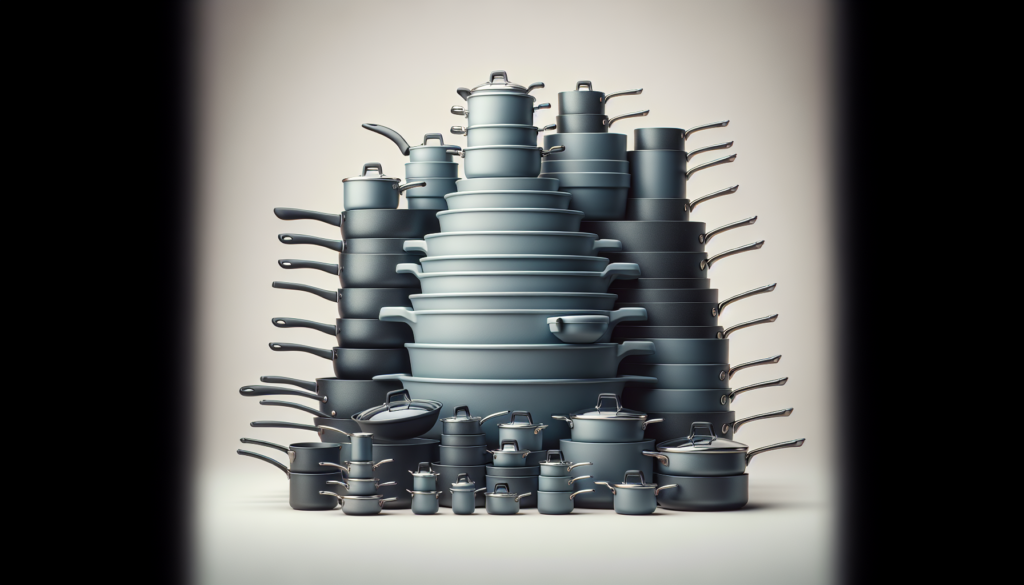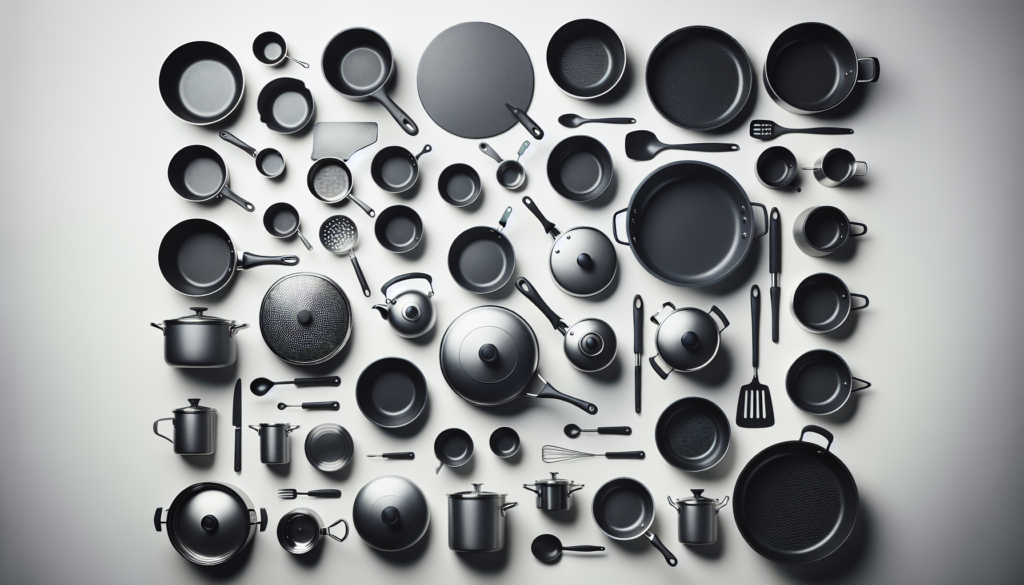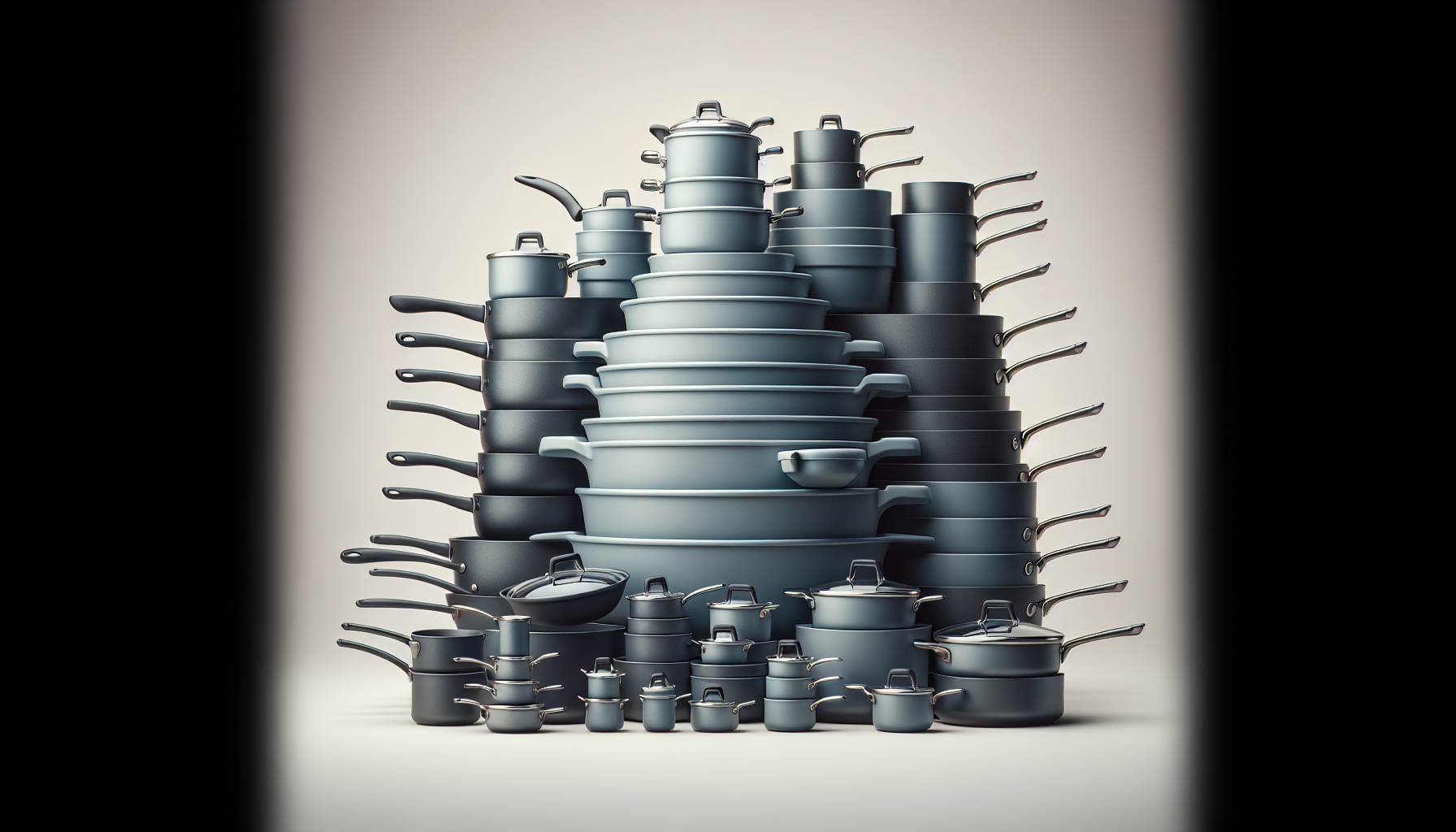When it comes to cooking for yourself, selecting the right size cookware can make a world of difference in your culinary adventures. Whether you’re a beginner or a seasoned home cook, having the perfect-sized pots and pans can greatly enhance your solo cooking experience. From perfectly portioned meals to efficient heat distribution, this article will guide you through the process of choosing the ideal cookware size for your solo cooking needs. Say goodbye to oversized pans and hello to perfectly customized cooking equipment!
Factors to Consider
When it comes to choosing the right size cookware for solo cooking, there are several factors you should consider. These factors include the frequency of your cooking, portion sizes, and cooking techniques. By taking these factors into account, you can ensure that you have the perfect cookware to meet your needs.
Frequency of Cooking
The first factor to consider is how often you cook. If you are someone who cooks on a daily basis, it may be beneficial to invest in a larger set of cookware. This will ensure that you have enough pots and pans to prepare a variety of meals without constantly having to wash dishes in between. On the other hand, if you only cook occasionally, a smaller set of cookware may be more suitable for your needs.
Portion Sizes
Another important factor to consider is your portion sizes. If you tend to cook meals in larger quantities, you will likely need larger cookware to accommodate these portions. On the other hand, if you prefer to cook smaller, individual-sized meals, smaller cookware will be more suitable. By considering your typical portion sizes, you can ensure that you choose cookware that is the perfect size for your needs.
Cooking Techniques
Lastly, you should consider your cooking techniques when choosing the right size cookware. Certain cooking techniques, such as sautéing or stir-frying, require a larger surface area to properly cook the ingredients. In these cases, a larger skillet or sauté pan would be necessary. On the other hand, if you primarily use your cookware for boiling or simmering, a smaller saucepan may be sufficient. By considering your preferred cooking techniques, you can choose cookware that is best suited for your style of cooking.
Types of Cookware
Now that we have covered the factors to consider, let’s dive into the different types of cookware that are available. The most common types of cookware include pots and pans, casserole dishes, and baking sheets. Each type of cookware has its own unique purpose and features that make it suitable for specific cooking tasks.
Pots and Pans
Pots and pans are a staple in any kitchen. They come in a variety of sizes and are used for a wide range of cooking tasks such as boiling, simmering, and frying. When choosing pots and pans for solo cooking, it is important to consider the size of the cookware in relation to the portion sizes you typically cook. Smaller saucepans are perfect for heating up soups or sauces, while larger pots are great for boiling pasta or preparing stews.
Casserole Dishes
Casserole dishes are another type of cookware that is commonly used for solo cooking. These dishes are typically made of ceramic or glass and are perfect for baking casseroles, lasagnas, or other baked dishes. When choosing a casserole dish, consider the size of the dish in relation to the portion sizes you typically cook. Smaller casserole dishes are great for individual-sized portions, while larger dishes can accommodate larger portion sizes or leftovers.
Baking Sheets
Baking sheets are a versatile piece of cookware that can be used for a variety of purposes. They are perfect for baking cookies, roasting vegetables, or even cooking bacon. When choosing a baking sheet, consider the size of the sheet in relation to the quantity of food you typically cook. Smaller baking sheets are perfect for smaller batches of cookies or vegetables, while larger sheets are great for larger quantities.

Choosing the Right Size
Now that we have discussed the different types of cookware, let’s delve into how to choose the right size for your needs. There are a few key considerations to keep in mind when selecting the size of your cookware, including your typical meals, storage space, and versatility.
Consider Your Typical Meals
One of the most important factors to consider when choosing cookware size is your typical meals. Take a moment to think about the dishes you most commonly prepare and the portion sizes you require. If you often cook large meals or batch cook for later, opting for larger cookware may be a wise choice. On the other hand, if you tend to prepare single servings or smaller portions, smaller cookware may be more suitable.
Evaluate Your Storage Space
It’s essential to consider your storage space when selecting cookware size. If you have limited cabinet or cupboard space, choosing a set of smaller cookware will help maximize the space you have available. Conversely, if you have ample storage space, you may have more flexibility in choosing larger cookware. Keep in mind that larger cookware requires more storage space and may not be feasible if you have limited room.
Look for Versatility
Another important aspect to consider is the versatility of the cookware. Opting for cookware that can serve multiple purposes can be a practical choice, especially for solo cooking. For example, a saucepan that can be used for boiling, sautéing, or making soups provides more flexibility than a specialized pot. This versatility can help minimize the number of different pieces of cookware you need to invest in.
Common Cookware Sizes
To help guide you in choosing the right size cookware, let’s take a look at some common cookware sizes. These sizes are commonly found in the market and can give you a good starting point when selecting your cookware.
Small Saucepan (1-2 quarts)
A small saucepan is perfect for heating up sauces, melting butter, or boiling small quantities of food. It is ideal for solo cooking, as it can handle smaller portions without wasting energy or taking up excessive space on the stove.
Medium Saucepan (3-4 quarts)
A medium saucepan is a versatile size that can accommodate a wide range of cooking tasks. It is ideal for boiling pasta, simmering soups, or cooking rice. This size is suitable for both solo cooking and preparing larger quantities.
Large Saucepan (5-6 quarts)
A large saucepan is perfect for cooking larger quantities of food or preparing meals for multiple people. It is ideal for making stews, cooking pasta for a group, or preparing large batches of soup. This size may be larger than necessary for solo cooking unless you frequently entertain or batch cook.
Small Skillet (8-10 inches)
A small skillet is perfect for sautéing vegetables, frying eggs, or making smaller portions of stir-fries. It allows for quick and efficient cooking while preventing overcrowding of ingredients. This size is ideal for solo cooking and can easily be stored in smaller spaces.
Medium Skillet (10-12 inches)
A medium skillet is a versatile size that can handle a variety of cooking tasks. It is suitable for searing meats, cooking larger portions of stir-fries, or sautéing vegetables in larger quantities. This size is ideal for solo cooking and can accommodate larger portions if needed.
Large Skillet (12-14 inches)
A large skillet is perfect for cooking larger quantities of food or preparing meals for multiple people. It provides ample surface area for stir-frying, searing meats, or cooking large batches of vegetables. This size may be larger than necessary for solo cooking, unless you frequently entertain or batch cook.
Sauté Pan (10-12 inches)
A sauté pan is similar to a skillet but features higher sides, making it ideal for cooking dishes that require more liquid. It is perfect for braising meat, making sauces, or simmering vegetables in sauces. This size is suitable for solo cooking and provides versatility for a variety of dishes.

Consider Specialty Cookware
In addition to the common cookware sizes discussed above, there are also specialty cookware options to consider for specific cooking needs. These specialty cookware pieces offer unique features and can enhance your cooking experience.
Grill Pan
A grill pan is a great addition to your cookware collection if you enjoy grilling indoors. It features raised ridges that replicate the grill marks and charred flavor you get from outdoor grilling. A grill pan is perfect for cooking meats, vegetables, or even sandwich bread. It provides a convenient way to achieve that grilled taste without needing an outdoor grill.
Wok
A wok is a versatile piece of cookware that is commonly used in Asian cuisine. It features high, sloping sides and a large surface area, making it ideal for stir-frying, deep-frying, and even boiling. The unique shape of the wok allows for quick and even cooking, making it a great choice for solo cooking. Additionally, a wok can be used for steaming, smoking, or even as a makeshift oven.
Enameled Dutch Oven
An enameled Dutch oven is a must-have for any cooking enthusiast. This versatile piece of cookware is perfect for slow-cooking stews, braising meats, or baking bread. It features a thick, heavy base that allows for even heat distribution and retention. The enameled coating provides a non-stick surface and ensures easy cleaning. A Dutch oven is a great investment for solo cooking, as it can accommodate both small and large portion sizes.
Benefits of Choosing the Right Size
Now that you have a better understanding of how to choose the right size cookware, let’s explore the benefits of selecting the appropriate size for your needs.
Efficient Heat Distribution
Choosing the right size cookware ensures efficient heat distribution. When using properly-sized cookware, heat is evenly distributed throughout the pan or pot, allowing for consistent cooking. This means that your food will cook more evenly, reducing the risk of undercooked or overcooked sections. Proper heat distribution is essential for achieving delicious and well-cooked meals.
Even Cooking
In addition to efficient heat distribution, the right size cookware promotes even cooking. By using cookware that matches your portion sizes, you can ensure that the heat is evenly distributed to all areas of the food. This prevents some portions from overcooking while others remain undercooked. Even cooking leads to better flavor and texture in your meals, enhancing your overall dining experience.
Easy Handling and Cleaning
Choosing cookware that is the right size for your needs makes it easier to handle and clean. Cookware that is too large may be bulky and difficult to handle, especially when transferring food from the pan to the plate. On the other hand, cookware that is too small may result in overcrowding of ingredients, making it challenging to stir or flip them. By selecting properly-sized cookware, you can ensure ease of use during cooking and cleaning.
Frequently Asked Questions
What if I have limited storage space?
If you have limited storage space, it is important to choose cookware that fits within your available space. Opting for smaller sizes or stackable cookware can help maximize your storage area. Additionally, considering cookware with removable handles or nesting capabilities can further save space.
Can I use smaller cookware for larger recipes?
While it is possible to use smaller cookware for larger recipes, it may not always be the most efficient option. Using cookware that is too small may result in overcrowding of ingredients, leading to uneven cooking. It is generally recommended to use cookware that matches the portion sizes or recipes you are preparing for optimal results.
What if my portion sizes vary?
If your portion sizes vary, it may be beneficial to choose cookware that can accommodate a range of sizes. Opting for versatile cookware, such as a sauté pan or Dutch oven, allows you to adjust the quantity of ingredients as needed. Additionally, having a variety of cookware sizes in your collection can provide flexibility for different portion sizes.
Conclusion
Choosing the right size cookware for solo cooking is essential for achieving delicious and well-cooked meals. By considering factors such as the frequency of your cooking, portion sizes, and cooking techniques, you can select cookware that perfectly suits your needs. Remember to evaluate your typical meals, storage space, and the versatility of the cookware to make the best decision. With the right size cookware, you can enjoy efficient heat distribution, even cooking, and easy handling and cleaning. Happy cooking!
